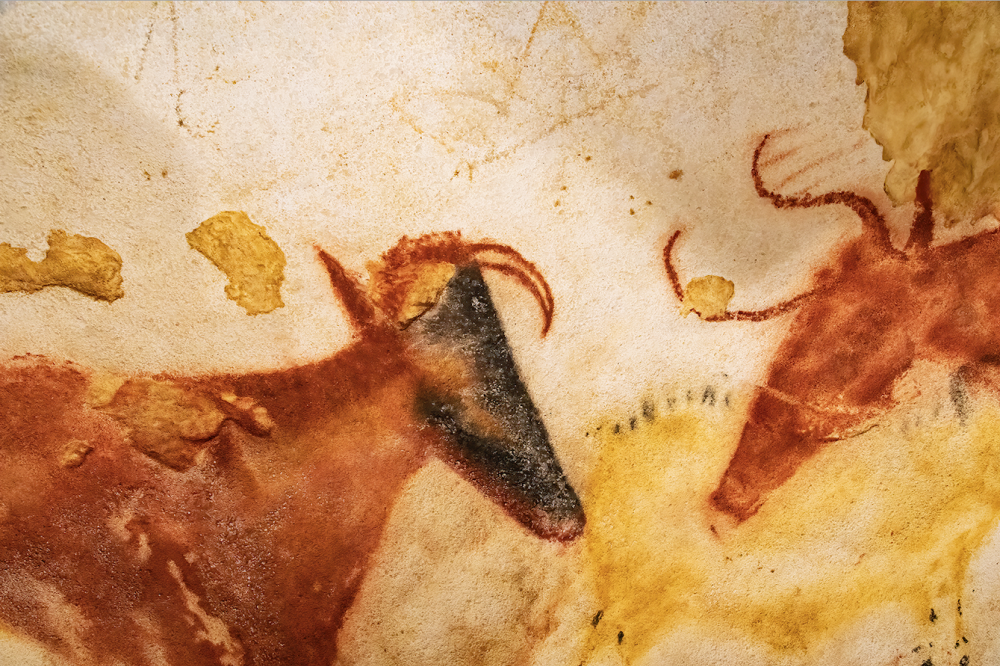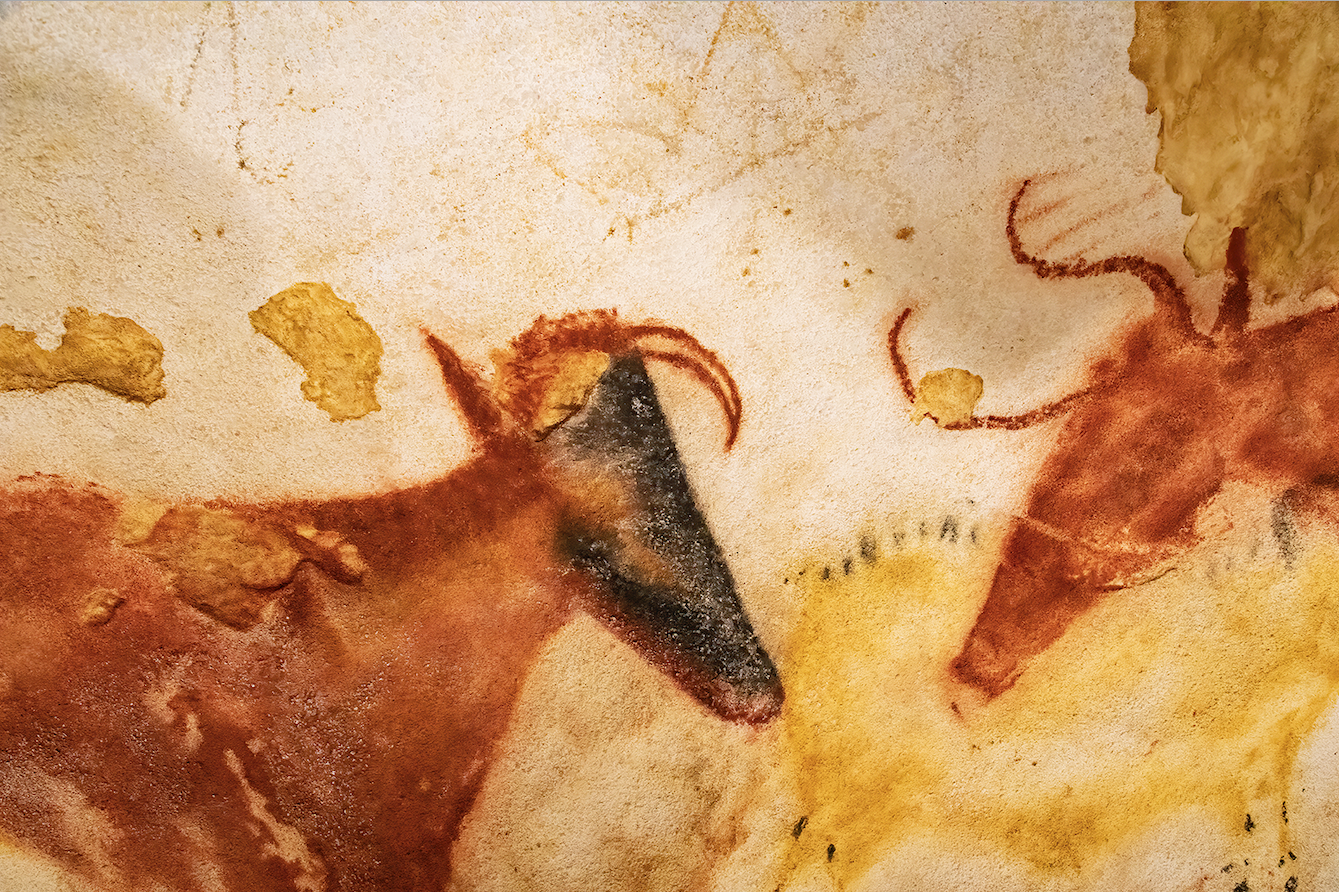Sign language - Europe
There’s a new reason to visit ice age caves a cross Britain and Europe, no w the meaning behind the art adorning the walls has been deciphered to reveal an early passion for seasonality

There’s a new reason to visit ice age caves a cross Britain and Europe, no w the meaning behind the art adorning the walls has been deciphered to reveal an early passion for seasonality
The first-ever pioneers of a seasonal and eat-local ethos date back much further than you might think, based on the evidence of artwork from the Ice Age in caves across Europe, which have been decoded by a London-based researcher. Caves in France, Belgium, Spain, Germany and England are among the 450 to include not merely drawings of animals such as mammoths, wild horses, deer, onyx and assorted prey, but also the essential information a hunter-gatherer from the Upper Palaeolithic era (some 40,000-13,000 years ago) would require to catch and kill their supper in and around the cave. Until they were decoded by independent researcher Ben Bacon, it was thought abstract symbols (dots, lines and X and Y shapes) next to the drawings either had little or no meaning or were simply indecipherable, but he used maths to find otherwise. ‘We cracked a tiny part of the meaning, which revealed a calendar that spans the year based on the moon,’ explains Ben. ‘And they used this calendar to track the movement of animals – their prey, their food – and give information such as when the bison were in this cave or when they travelled as a herd, when they were mating and when they had young, so were vulnerable to attack.’
The findings essentially mean that humans became closer to us, in terms of the way they thought, far sooner than imagined. ‘Many human species, such as Neanderthal, became extinct because they weren’t flexible in the kind of food they would eat. Their diet was much more limited, so for instance if they ate seal, but there was no seal, they wouldn’t think, ‘Okay, let’s try fish, or polar bears,’ – they would just go hungry.
But this writing system changed that because it recorded all this information for anyone who came into the cave. It related to that specific cave – what the ibex was doing in spring, where you could find this plant and bison in summer, where the migrating reindeer were in autumn; it was all about food procurement.
‘It’s quite sophisticated and undeniably effective – and once people are not starving and can find food, it frees you up to have leisure time and do things such as making great paintings,’ says Ben. ‘The thing that really struck all of us is that there’s no longer real distance between us [modern humans] and them, because we never thought they had cognitive ability like this, or that people could use numbers or write until 5,000 years ago. But now we know this isn’t true – 25-30,000 years ago they had these sophisticated systems. It’s quite profound that they used these cognitive tools to navigate a brutal landscape.’
The caves can be found anywhere south of the ice sheet, which ran from southern Belgium to southern Norway, explains Ben. ‘So there are caves in Portugal, Italy, Germany and in England – in Derbyshire, Kent and Dorset. There’s a huge interest in them in Spain and France, in particular, where people are keen to read what was written 30,000 years ago. It’s quite extraordinary discovering what these millions of signs mean.
‘Ultimately it’s about seasonality, because animals have such strict life cycles and patterns,’ says Ben, ‘It’s knowing when to “harvest” and where to do it. It’s not just about bears and wolves – it’s fish too as they’ve meticulously recorded fjords sites. With every kind of migration there are certain choke points: a salmon in a river where they have to negotiate waterfalls and shallows, as that’s where the fish expose themselves and make themselves vulnerable to humans or bears.’
The marks also relate to things beyond the food chain. ‘In the Dordogne in France, we’ve found a flat stone worn as a pendant, and on it this woman records the birth of her child – a girl – and that’s incredible,’ says Ben. ‘We always knew wearing something around the neck was important, that maybe people thought it was magic or would keep evil spirits away, but it’s actually no different from us having a picture of our family on our phone’s home screen. We now know that these marks aren’t just a scratch on a rock, but it’s about real people, a mum who loved her little girl.’
Access to the caves varies from location to location and while many are accessible and known to the public, some are protected. ‘There are dozens in the Dordogne, and Lascaux is important because it was discovered in 1940.’
Such is the importance of Lascaux they’ve now used 3D scanning technology to replicate the caves and there is an identical site next to it, allowing visitors to see the works of art without damaging the original.
The last word must go to Picasso. ‘He went to see Lascaux,’ explains Bacon, ‘and when he came out he said everything else in the arts was “degenerate” after this – that it was the height of art due to the purity of it. He said he simply couldn’t surpass it.’

LASCAUX, DORDOGNE, FRANCE
A complex of caves home to several areas of art including the Great Hall of the Bulls, where you’ll find four huge bulls, including one that’s 5.2m long. There are almost 2,000 figures – as well as symbols, humans, birds, bears, rhinos and horses all feature. lascaux-dordogne.com
A LTA M I R A , C A N TA B R I A , S PA I N
Discovered in 1868, and declared a Unesco World Heritage Site in 1985, the Cave of Altamira is over 1km long and consists of twisting passages and chambers. The paintings include a herb of steppe bison (now extinct), horses, deer, goats and wild boar, not to mention human hand prints from the artists. culturaydeporte.gob.es/mnaltamira
G OY E T , WA L L O N I A , B E L G I U M
Set in the beautiful Samson valley, this cave tells a thousand stories – including the revelation that their first inhabitants were cannibals – with a lot of artefacts discovered here, including a 30,000-year-old dog skull, in addition to the paintings. visitwallonia.com
CRESWELL CRAGS, DERBYSHIRE, ENGLAND
An entire complex of activities has built up around these incredible caves, with tours of the nine largest caves, including spectacular carvings of bison, birds, reindeer and humans, not to mention plenty of symbols. For fun, tours include the Robin Hood cave, where legend has it the outlaw once hid. creswell-crags.org.uk
VOGELHERD, SWABIAN JURA, GERMANY
Part of a wider collection of Unesco-protected caves and Ice Age art in Swabian Jura, in the Vogelherd cave archaeologists have uncovered thousands of incredible finds such as carved figurines made from the ivory of woolly mammoths, one of the oldest works of art known to man. Art includes cave lions, mammoths, horses and cattle.
Subscribe and view full print editions online... Subscribe